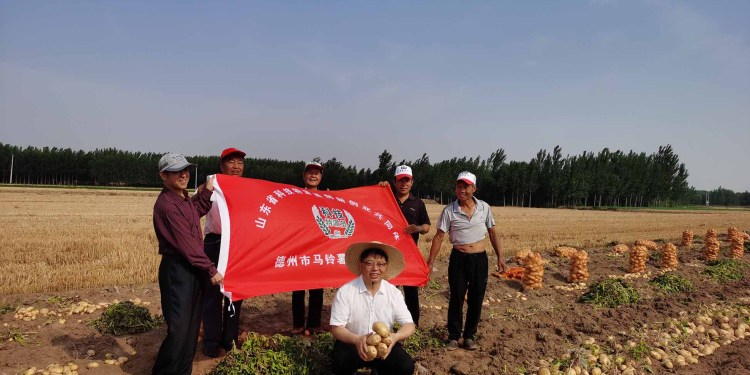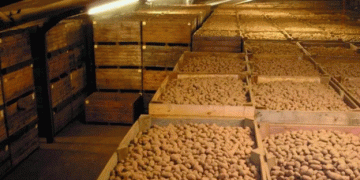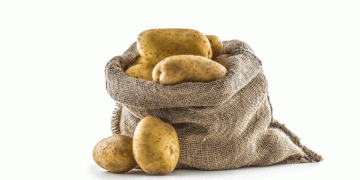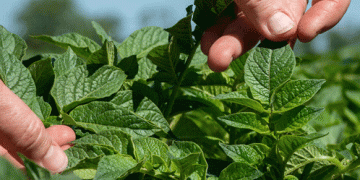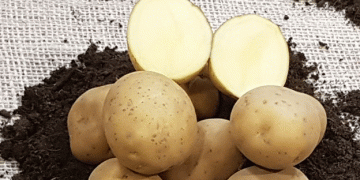Potatoes have been known in China for over 400 years. During this time, the initially alien product managed to become not only one of the important elements of the local cuisine, but also a part of the national culture.
It is believed that the potato appeared in China during the Wanli period of the Ming Dynasty (1572-1620). Researchers find evidence of this in books written during that period. One of the authors, Jiang Yikui, who served as a justice of the peace in Lingchuan County in the 16th century, and later served as a commander in the western district of Beijing, described in his work all the unusual objects and events that he encountered, and mentioned potatoes – “similar in taste to peanut”. The fact that the potato was included in the list of curiosities suggests that at that time the culture was still not very common in China.
Xu Guangqi, the Minister of Rites during the reign of Chongzhen of the Ming Dynasty, left a more detailed description of the potato: “A ground sweet potato, also known as a potato. It has vine-like leaves similar to beans; round roots resembling chicken eggs, with white flesh and yellow skin. It can be boiled to make gray soup or steamed. The juice from boiling can be used to wash clothes, leaving them clean and white as jade.”
By the end of the Ming Dynasty, potatoes were included in the list of palace delicacies. This is emphasized by Liu Ruoyu in Zuo Zhong Zhi, although the author himself does not see anything special in the product: “Among hundreds of delicacies, potatoes are unremarkable – from taste to appearance. The most attractive thing about potatoes is that they come from foreign lands.”
The potato was originally cultivated in the Beijing-Tianjin region, but by the end of the Ming Dynasty and the beginning of the Qing Dynasty, it spread to other areas. The technology of crop production has become more advanced, the yield has increased. Potatoes became available to the general population.
In the middle of the Qing Dynasty, China experienced rapid population growth, which increased the demand for food. The food crisis led to the first peak in potato cultivation. During this period, residents of some regions of the country learned to grind potatoes into flour and sell processed products throughout the country.
From the early years of Emperor Qianlong’s reign (reigned from 1735 to 1796), farmers were able to move freely around the country. Thanks to this, potato seeds and planting methods have spread further, even to the remote southwestern and northwestern regions and the southern Shanxi plateau. Potato quickly adapted to the difficult natural environment and showed a fairly high yield even on poor soils: one plant produced more than a dozen tubers, for those times it was amazing.
In the Daoguang era (1820-1850), potatoes began to be grown in the central and northern regions of Shanxi, gradually becoming the main potato-producing region in the country. At the beginning of the 19th century, potatoes were produced in significant quantities in the provinces of Yunnan, Guizhou, Shanxi and Gansu.
It is important to note that the potato was especially popular in highland areas with low grain production, where only buckwheat used to grow. It was the main source of food for the poor, and as a result, became associated with poverty. The phrase “I grew up on potatoes” in China meant that a person grew up in a poor, mountainous countryside.
At the same time, in some regions, potatoes managed to win the position of a typical regional product, which serves as the basis for preparing favorite national dishes. So the people of the Northeast fell in love with “potatoes stewed with pork ribs”, in the North and Northwest you can find many options for fried potato slices, and in Yunnan they cook “potato slices with pickles”. Regional Chinese potato dishes were offered at inland food establishments, while French fries and mashed potatoes were served at Western-style cafes.
However, the potato has always been important to China, not so much because it increased the number of cultivated crops in the country and expanded the diet of citizens, but because it helped to cope with food crises caused by population growth (population explosions). To understand the scale of the problem, let us cite statistics: in 1741, the population of China was 143 million people, in 1790 – already 301 million, in 1835 – 402 million. economic development of the country.
In the 20th century, interest in potatoes in China began to increase in the 1960s and early 1970s, after the Great Chinese Famine. Then a sharp jump in production occurred in 1993 against the backdrop of a sharp decline in cultivation in Europe. In this lane iodine China has come to the forefront of the international potato production arena. True, the level of potato consumption per capita in China remained significantly below the world average.
In 2015, the Chinese Academy of Sciences recommended that the authorities adopt a strategy to promote the potato as a staple food (along with rice, wheat and corn) to ensure the country’s domestic food security. In 2016, the Chinese government released “Guidelines for Promoting Potato Development”. Subsequently, appropriate measures were also taken in the provinces and cities to increase production and increase demand for potatoes.
The choice in favor of potatoes was not made by chance. Scientists relied on the fact that this crop can be grown in almost any region of China, it requires less water (compared to wheat and rice) and is quite nutritious. At a time when a country has to feed a fifth of the world’s population, and agricultural land is steadily shrinking due to urban growth, these criteria are critical. With a population expected to reach 1.5 billion by 2030, China estimates it will need to produce an additional 100 million tons of food each year.
The Chinese government also saw the potato as a tool to alleviate poverty. The poorer regions of the country are mainly concentrated in the mountains, where a rather harsh climate reigns and there is a lack of transport infrastructure. The development of potato production in these regions will not only provide food for the inhabitants, but also provide opportunities for increasing the income of many small family farms, since it is more profitable to grow potatoes here than rice, wheat, soybeans or corn.
Another reason for the special attention to potatoes in China is the promotion of healthy eating ideas. Potatoes contain a wide range of vitamins, minerals and phytonutrients and, according to Chinese scientists, are simply essential in the diet of both residents of megacities and villages. According to specially developed recommendations of nutritionists, the daily diet of children under 14 years of age should include 25-50 g of potatoes, the daily consumption rate of minors over 14 years of age and adults is 50-100 g (CNS, 2017).
Sources: Information Administration of the Ministry of Agriculture of China; Son Of China website (sonofchina.com)
